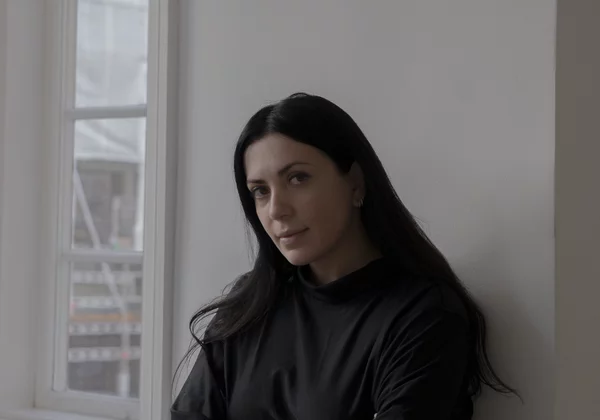Lesia Vasylchenko
Lesia Vasylchenko (born in Kyiv, Ukraine; lives in Oslo, Norway) works across a range of media including video, photography and installation. In her research-based practice, Vasylchenko explores encounters between visual cultures, media technologies and the politics of time. She is a co-curator of the artist-run gallery space “Podium” and the founder of “STRUKTURA. Time”, a cross-disciplinary initiative for research and practice in visual arts, media archaeology, literature and philosophy. She holds a degree in Journalism from the Taras Shevchenko National University in Kyiv and a degree in Fine Arts from the Oslo National Academy of the Arts. Vasylchenko’s work has been recently exhibited at MUNCH Museum, Henie Onstad Art Center and Kunsthall Oslo. Vasylchenko’s works are part of the collection of the Museum of Contemporary Art KIASMA / Finnish National Gallery in Helsinki, Finland.

A WILLOW’S LAMENT ETCHED IN LIGHT
2025
sculpture
5D memory crystal, weeping willow tree, SAR satellite image, concrete, cast epoxy resin
Commissioned by the Museum of Modern Art in Warsaw, the Visual Culture Research Center, and RIBBON International for the Kyiv Biennial 2025. Supported by OCA Norway
This memorial belongs to the speculative future, exploring how memory and mourning are stored in technological, cultural and ecological dimensions. At its center stands a weeping willow, rooted in Ukrainian folklore as a symbol of the cyclical nature of time, memory and renewal. The work combines synthetic-aperture radar (SAR) data, folklore, and ghost stories to trace willow forests now growing where water once flowed. Embedded in the sculpture is a SAR satellite image of the Kakhovka reservoir, captured after the catastrophic destruction of the Nova Kakhovka dam on 6 June 2023, as well as an optical 5D data device—the “eternal memory crystal”—designed to preserve data for billions of years. Encoded with light, it surpasses paper, film or hard drives, serving as both a metaphor and an epitaph of deep time: a fossilized light transporting memory into a future yet to come. Inside is the voice of the artist’s grandmother, singing a Ukrainian folk song about weeping willows—preserved within a technology designed to carry it far beyond human timescales.
TACHYONESS
2022
HD Video, 8 Min.
Footage from archives, photos, YouTube, CCTV, drone footage, news clips
NIGHT
2025
HD Video, 6 Min.
Footage from the H.S. Pshenychnyi Central State Cinema, Photo and Phono Archive of
Ukraine and the artist’s family archives, postcards, YouTube, CCTV, drone footage, news clips,
videos from the frontline
The stars we observe may have long disappeared, yet their light still reaches us after millions of years. Information, like this light, transcends technical, temporal, and political barriers. Night and Tachyoness unfold as a media archaeology of the image, where each technological era leaves its own trace of time.
Night reconstructs a century of Ukrainian night, combining video recordings of the night sky from 1918 to 2025. Vasylchenko transforms linearity into simultaneity: the video embodies one continuous night in which an entire century unfolds in a constant flow. Through footage of blackouts and shelling, the work shows how war turns night into a space of fear and vulnerability, reflecting the generational continuity of trauma.
Drawing on Jacques Derrida’s notion of hauntology, the artist reveals how night erases dominant knowledge systems and conceals within itself all that is unwritten and undocumented – the hidden voices of those who have witnessed history but remain unheard, waiting for their moment to emerge. The night exposes a past that never fully disappears and continually returns as a ghost of history, shaping both the present and the future.
Tachyoness takes its title from “tachyon,” a hypothetical particle that travels faster than light. The work presents sunrises from 1990 to 2022, condensing thirty years of history into a single event. It merges hundreds of photographs collected by the artist from various sources into a machine-generated memory of dawn. The video reflects on predictive technologies and the influence of artificial intelligence on the construction of memory. Tachyoness lasts eight minutes – the time it takes for sunlight to reach the Earth and the human eye.